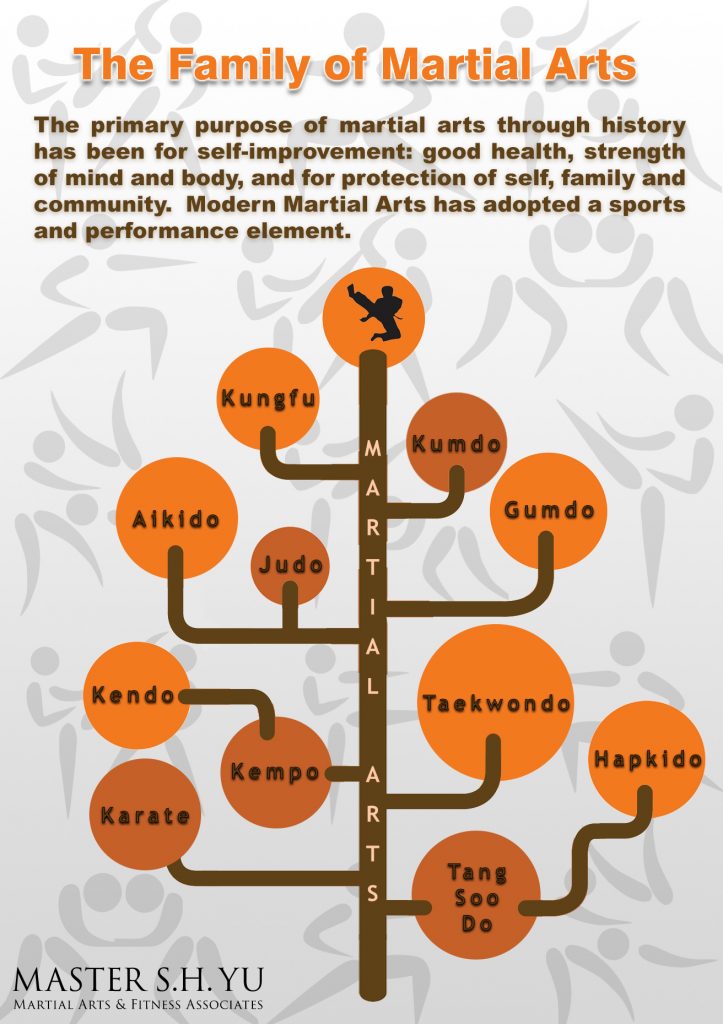Unwinding The Secret Of Multiple Fighting Style Techniques: An Overview To Martial Arts, Taekwondo, And More
Unwinding The Secret Of Multiple Fighting Style Techniques: An Overview To Martial Arts, Taekwondo, And More
Blog Article
Web Content Composed By-Faber Joseph
Are you tired of feeling overwhelmed by the huge globe of martial arts? With many designs to select from, it can be very easy to get lost in a sea of strikes, kicks, and strange names. Yet worry not!
This conversation will debunk the various fighting styles styles, taking you on a trip from the effective strikes of Karate to the vibrant kicks of Taekwondo. Get ready to uncover the beginnings, strategies, and ideologies behind these ancient art types.
So, tighten your belt and prepare to start an enlightening exploration into the captivating globe of martial arts.
Beginnings of Martial Arts Styles
The beginnings of fighting styles styles can be mapped back to old worlds and their need for self-defense and battle techniques. Throughout history, different cultures created their own distinct techniques of fighting, each with its own set of methods and approaches.
In China, as an example, fighting styles styles such as Martial art and Tai Chi were developed as a way of self-defense and enhancing physical and mental wellness.
In Japan, the samurai warriors created designs like Karate and Judo, concentrating on self-control, precision, and proficiency of the body.
In https://www.citizen-times.com/story/news/madison/2021/12/03/pathfinder-martial-arts-owner-talks-mars-hill-businesss-expansion/8837532002/ , in Korea, Taekwondo emerged as a martial art emphasizing high kicks, rapid motions, and mental fortitude.
These very early worlds laid the foundation for the diverse variety of martial arts styles that exist today, each with its own abundant background and cultural significance.
Strategies and Training Methods
To master fighting styles styles, specialists should discover various techniques and training methods.
Strategies are the particular movements and actions utilized in fight, such as punches, kicks, throws, and blocks. Different fighting styles styles have their very own unique set of techniques that practitioners have to grasp via rigorous training.
Educating methods vary depending on the style, however they typically entail a combination of physical conditioning, drills, sparring, and kinds.
Physical conditioning is critical to develop stamina, versatility, and endurance. Drills help experts fine-tune their strategies and improve their speed and precision.
Sparring permits professionals to practice their methods in a regulated, practical environment. Forms, additionally called kata, are ironclad series of activities that help experts create muscle memory and focus.
Ideologies and Concepts
Discovering the approaches and concepts of fighting styles designs can provide you with a deeper understanding of your chosen self-control. Each martial art has its own one-of-a-kind ideology and collection of leading concepts that form the way it's exercised.
As an example, Karate stresses discipline, regard, and self-constraint. It teaches practitioners to focus their body and minds, allowing them to safeguard themselves while keeping a sense of inner peace.
On martial arts for 8 year old , Taekwondo places a solid focus on speed, dexterity, and flexibility. Its principles are rooted in the tenets of courtesy, integrity, willpower, self-discipline, and unbeatable spirit.
Final thought
Since you have actually explored the beginnings, strategies, and approaches of different fighting styles designs, you have a deeper understanding of these old techniques.
Envision a young karate trainee, experimenting steady determination and emphasis, appearing boards with an effective strike.
Their trip showcases the devotion and toughness called for to master a fighting style, reminding us that with self-control and determination, anything is possible.
